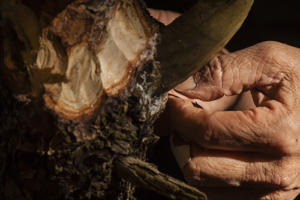American hornbeam bonsai repot
American Hornbeam Bonsai (Carpinus caroliniana)
Bonsai trees are miniature versions of larger trees and are a symbol of peace, harmony and balance. The American Hornbeam Bonsai (Carpinus caroliniana) is a deciduous tree that is native to North America and is an excellent choice for those who are interested in growing bonsai trees. In this article, we will explore the characteristics, care, and styling of the American Hornbeam Bonsai.
Characteristics of the American Hornbeam Bonsai
The American Hornbeam is a slow-growing tree that can reach up to 50 feet tall in its natural habitat. However, in a bonsai form, it typically grows to a height of 6 to 18 inches. The leaves of the American Hornbeam are oval-shaped and grow to about 2 inches long. The leaves are dark green in color and have a smooth texture. The tree produces small, inconspicuous flowers in the spring, followed by nut-like seeds that mature in the fall. The bark of the American Hornbeam is smooth and gray, with a muscle-like texture.

Care of the American Hornbeam Bonsai
The American Hornbeam is a hardy tree that is relatively easy to care for. It prefers a location with partial shade and moist, well-drained soil. The tree is also sensitive to drought, so it is important to keep the soil consistently moist, but not waterlogged. In the winter, it is important to protect the bonsai from cold temperatures, as it is native to a temperate climate.
Pruning and wiring are important techniques in shaping and maintaining the form of the American Hornbeam Bonsai. Pruning should be done regularly to keep the tree compact and to encourage branching. Wiring can be used to shape the branches and to create a desired form. Wiring should be done carefully to avoid damaging the branches and should be removed after several months, as the tree grows and takes its desired shape.
Styling the American Hornbeam Bonsai
The American Hornbeam Bonsai can be styled in a variety of ways, including formal upright, slanting, group planting, and cascade styles. The formal upright style is the most common style for the American Hornbeam Bonsai, and it is characterized by a straight trunk with branches that are evenly spaced and arranged in a symmetrical fashion. The slanting style is characterized by a trunk that is angled to one side, giving the tree a more natural look.
The group planting style is a more advanced technique, where multiple American Hornbeam Bonsai trees are planted together to create a small forest-like scene. The cascade style is characterized by a trunk that hangs over the edge of the pot, giving the impression that the tree is cascading down a cliff or over a rock. This style is best suited for taller American Hornbeam Bonsai trees.
Conclusion
The American Hornbeam Bonsai (Carpinus caroliniana) is a beautiful and hardy tree that is well-suited for those who are interested in growing bonsai trees. With its smooth, muscle-like bark, oval-shaped leaves, and small, inconspicuous flowers, the American Hornbeam Bonsai is a unique and attractive addition to any bonsai collection. With proper care and styling, the American Hornbeam Bonsai can be enjoyed for many years to come.







Leave a Reply
Your email is safe with us.
You must be logged in to post a comment.